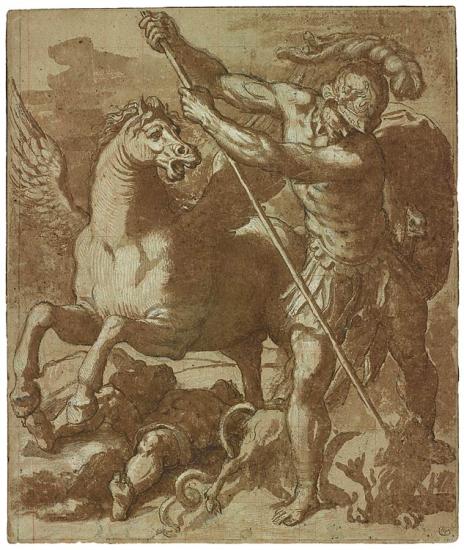
Bellerophon Killing the Chimera
Gift of Janos Scholz, 1973
Porta left Rome with his master, Francesco Salviati—whose name he later assumed—and arrived in Venice in July 1539. In that year he executed his most important commission in fresco, an ambitious ceiling for the Sala dell'Anticollegio in the Palazzo Ducale, which was destroyed by fire in 1574. Although he did not develop a pronounced individual style, Porta is partially responsible for bringing central Italian Mannerism to Venice.
This drawing is thought to be the study for a lost fresco painted on the facade of Nicolo Bernardo's house in Campo di San Polo, Venice.
Patronage
The astonishing creative efflorescence of sixteenth-century Venice would not have been possible without a rich network of civic, religious, and governmental support. The republic was governed by a hereditary ruling class under the leadership of a doge—generally a member of the inner circle of powerful local families whom the aristocracy appointed for life. Venice celebrated itself and proclaimed its civic ideals in large paintings by Titian, Veronese, and Federico Zuccaro that lined the walls of the Doge's Palace. Wealthy lay confraternities, called scuole, provided another essential layer of support and promoted a distinctively Venetian style of large narrative composition. Finally, a powerful and enlightened aristocracy commissioned works for their private dwellings in town and on the mainland. Whereas Giovanni Bellini and his followers had primarily produced altarpieces and religious images for personal devotion, this new generation of Venetian artists also met the demands of their expanding clientele for secular subject matter.
